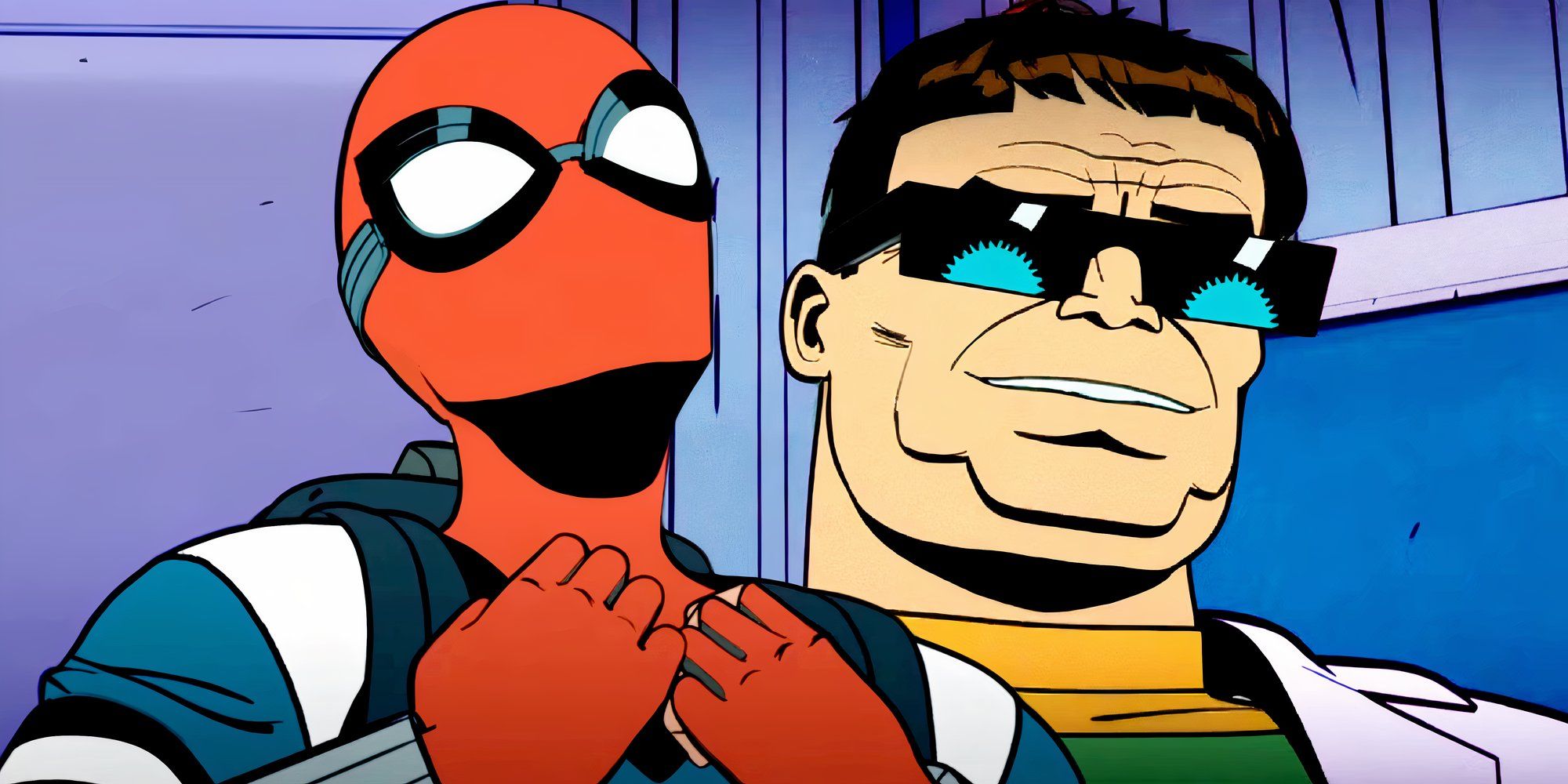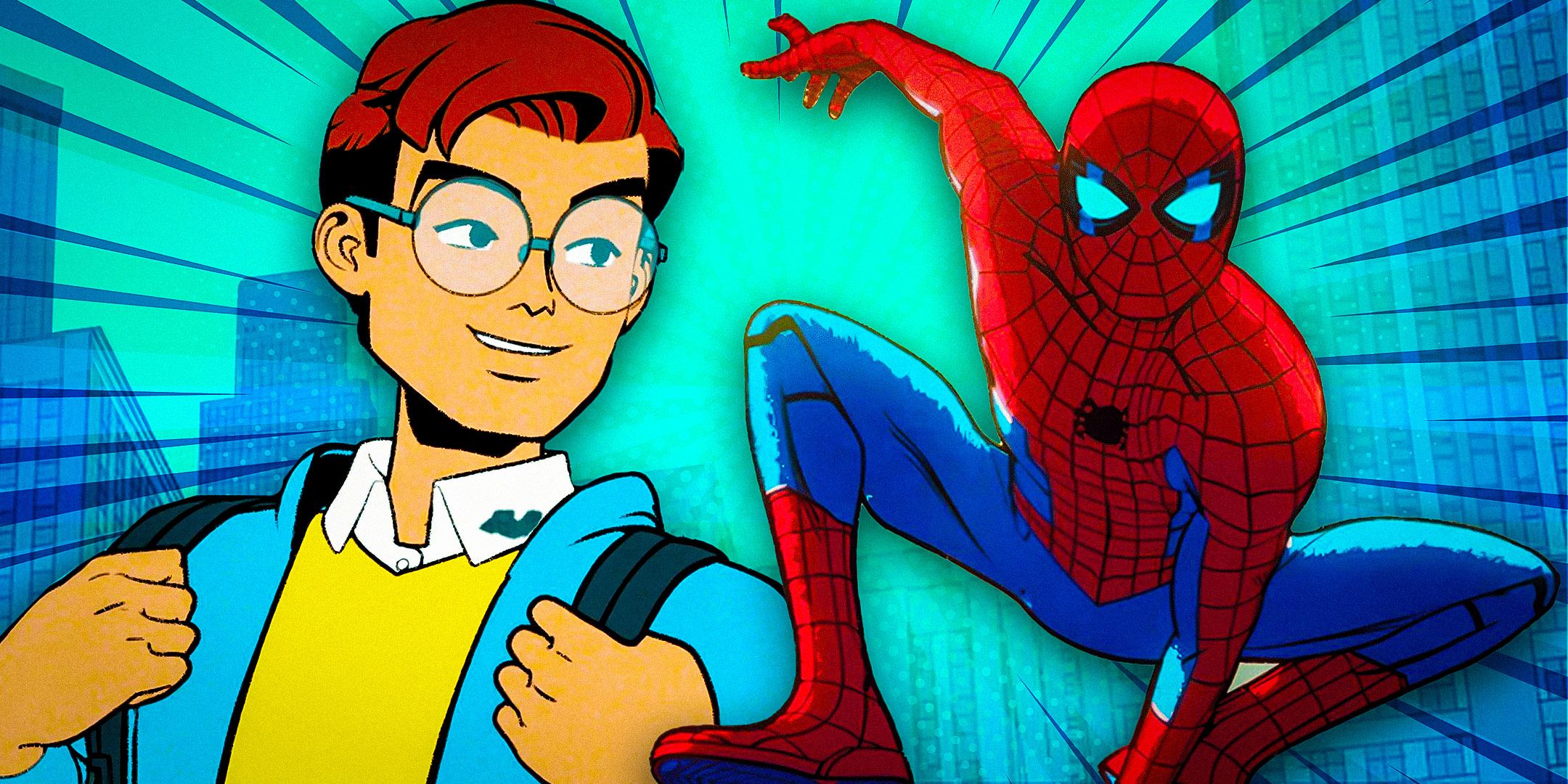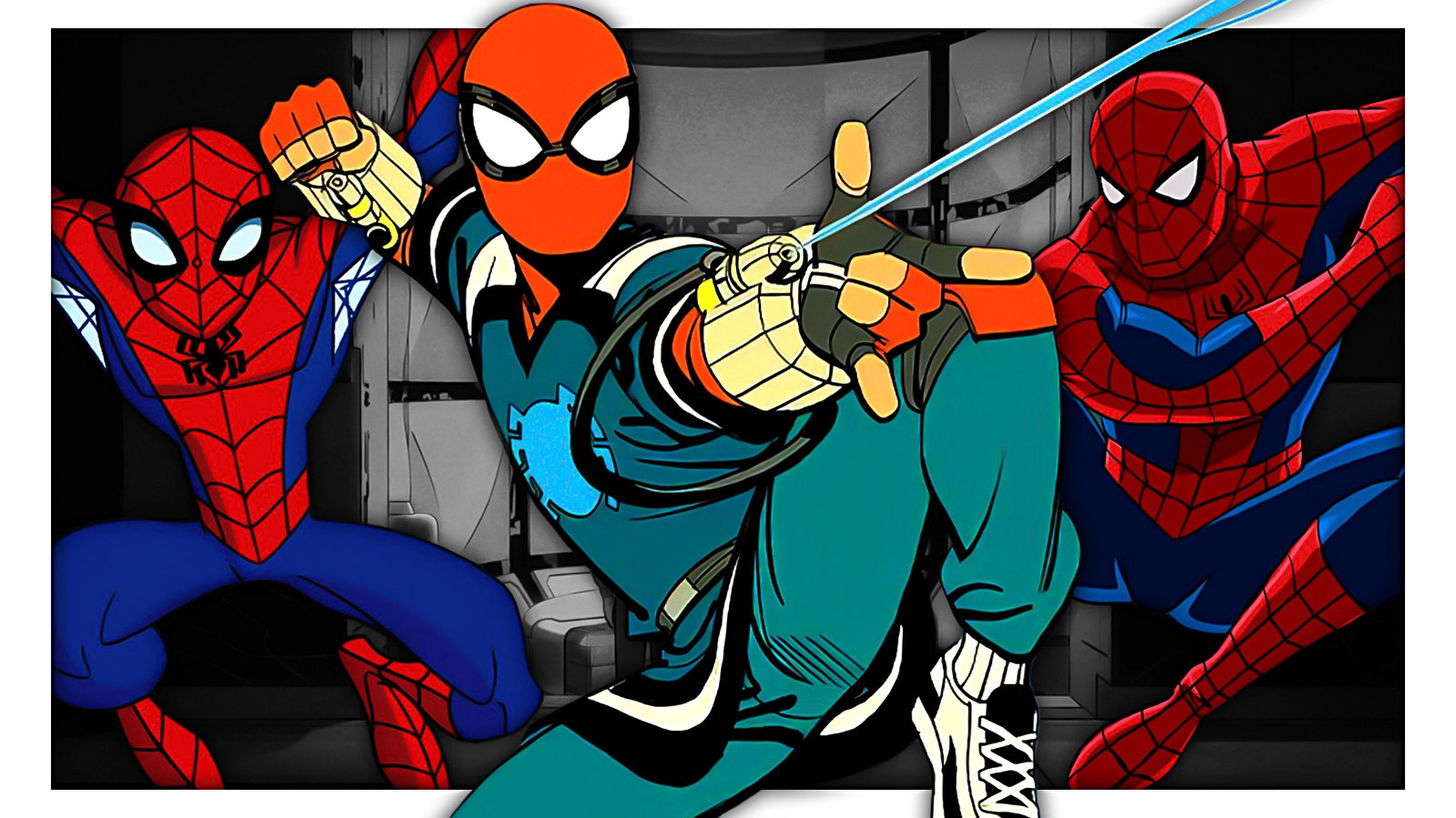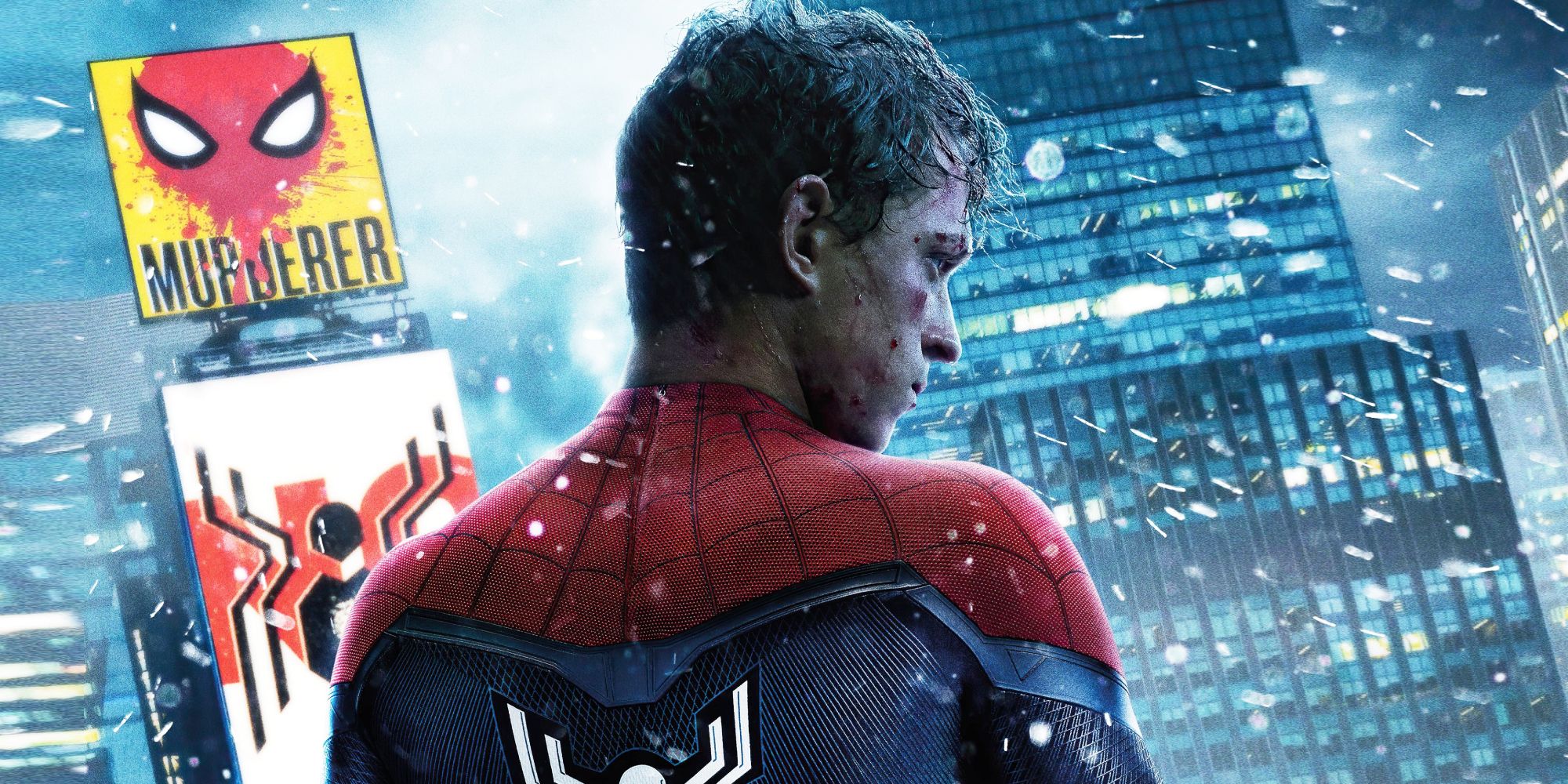Spoiler alert! This article contains spoilers for Your Friendly Neighborhood Spider-Man, episodes 9 & 10.
brought Marvel’s iconic Web-Head to life, and in some ways was more effective than any of the live-action Spider-Man movies. While the live-action Spider-Man movies have offered iconic portrayals of Peter Parker across three different iterations – Tobey Maguire’s grounded drama, Andrew Garfield’s stylish action, and Tom Holland’s integration into the MCU timeline – this animated series sets a new standard. Indeed, Your Friendly Neighborhood Spider-Man demonstrates why an animated format can often surpass the constraints of big-budget blockbusters.
Live-action Spider-Man movies have defined superhero cinema for over two decades, with each series bringing something unique. Sam Raimi’s trilogy introduced the character to mainstream audiences with heart and spectacle, Marc Webb’s The Amazing Spider-Man films emphasized a more grounded and emotional take, and the MCU iteration, led by Tom Holland, blended Spider-Man seamlessly into a shared universe. However, each approach had its flaws. Your Friendly Neighborhood Spider-Man, however, refines what made these movies work while avoiding their pitfalls.
The introduction of the symbiotes in Your Friendly Neighborhood Spider-Man is handled with a level of care and foreshadowing missing from the live-action films. The first episode features an intense battle between Spider-Man and Doctor Strange against a monstrous symbiotic alien, immediately establishing the species as . Unlike Spider-Man 3, which rushed Venom’s storyline, or Spider-Man: No Way Home, which shoehorned a symbiote tease that ultimately led nowhere, this series builds up their threat gradually.
By the Your Friendly Neighborhood Spider-Man’s finale, Doctor Strange and Spider-Man must once again work together to neutralize the alien, creating a climactic showdown that reinforces the danger these creatures pose. A piece of the symbiote remains behind, naturally setting up a Venom storyline for future seasons without feeling forced. This organic introduction .
Unlike the live-action Spider-Man films, which typically introduce characters only as necessary, Your Friendly Neighborhood Spider-Man launched . Spider-Man exists in a world populated by numerous heroes, a diverse array of classic and new villains, and a complex criminal underworld featuring warring gang factions. This approach feels truer to the comics, where Peter Parker constantly interacts with other superheroes and grapples with New York’s evolving criminal landscape.

Related
Every Marvel Villain Confirmed To Exist In The MCU's New Spider-Man Universe
Your Friendly Neighborhood Spider-Man introduced a swathe of classic and modern Marvel villains, many of which have been reimagined for the series.
Additionally, the series balances Spider-Man’s superhero duties with his personal life in a way that feels natural. Audiences are privy to Peter’s relationships, academic struggles, and day-to-day interactions fleshed out in greater detail than any of the films allowed. This is largely thanks to the long-form episodic format, but nevertheless, the ability to explore these elements over multiple episodes m that surpasses the limitations of film.
Your Friendly Neighborhood Spider-Man succeeds in maintaining a serialized connection between episodes while still offering distinct adventures. This mirrors the approach taken by the iconic Spider-Man: The Animated Series, which had . In contrast, the live-action movies often feel disconnected – each trilogy resets the character, and even within individual series, continuity sometimes feels inconsistent.
The Raimi Spider-Man films had to retcon elements due to studio interference, The Amazing Spider-Man struggled with unresolved plot threads, and the MCU version heavily relied on retroactive explanations to connect stories. Your Friendly Neighborhood Spider-Man, ensuring that character growth, relationships, and conflicts carry forward organically. This level of continuity strengthens the overall narrative and makes for a more satisfying viewing experience.
Spider-Man’s world, originally created in the 1960s, featured a predominantly white male cast of characters. While this was a reflection of the era’s comic book industry, it is no longer representative of the diverse landscape of modern New York City, or indeed worldwide comic book audiences. Updating these characters in contemporary adaptations has.
The live-action Spider-Man films largely preserved the original character designs, with the notable exception of Jamie Foxx’s Electro. Your Friendly Neighborhood Spider-Man, however, takes a more thoughtful and effective approach to diversification. By reimagining certain characters with backgrounds that, the series feels more authentic and relevant. This modernization enhances representation while still staying true to the essence of the characters, demonstrating how adaptations can evolve while respecting their source material.
One of the biggest shortcomings of the live-action Spider-Man films is their tendency to forcefully set up future narratives, often inorganically cramming in teases that never come to fruition. The Amazing Spider-Man series, while Sam Raimi’s Spider-Man 3 and the MCU’s Spider-Man: No Way Home struggled to balance their overloaded foreshadowing. In contrast, Your Friendly Neighborhood Spider-Man excelled at naturally planting seeds for future events.

Related
Every Your Friendly Neighborhood Spider-Man Season 1 Episode, Ranked
Your Friendly Neighborhood Spider-Man season 1 has come to an end after 10 brilliant episodes that explored a new Peter Parker variant's origin story.
Subtle yet thrilling details, such as Tombstone’s eventual transformation into a superpowered threat, was a thrilling reference for savvy audiences. While larger arcs, like Carla Connors’ impending turn into the Lizard was teased with the arrival of reptiles at Oscorp. Norman Osborn’s gradual descent into villainy has been teased gradually throughout through sinister inflections. The show, making its world feel organically rich and full of potential without sacrificing the narrative’s flow.
The live-action Spider-Man movies have often skim over Peter Parker’s web-shooters, treating them as a minor detail. Tobey Maguire’s Spider-Man avoided the issue entirely by giving him organic webbing, removing the need for engineering altogether. Andrew Garfield and Tom Holland’s versions did feature mechanical web-shooters, but their of his arsenal.
Your Friendly Neighborhood Spider-Man took a different approach, showcasing the extensive engineering required to develop the web-shooters. The early models were gas-powered, requiring Peter to carry a visible canister on his back, . The show frequently revisited the technology’s evolution, showing Peter, Harry, and Norman Osborn’s constant assessment and problem-solving to refine his technology. This grounded aspect of Spider-Man’s abilities made his scientific ingenuity feel more impressive and crucial to his success.
In most live-action adaptations, Peter Parker’s scientific brilliance is given only surface-level recognition before being overshadowed by action-heavy sequences. While each iteration briefly acknowledges his intelligence – whether it’s through quick lab scenes, tech-based problem-solving, or quips about his nerdy background – . Your Friendly Neighborhood Spider-Man corrects this by making Peter’s scientific mind a constant focal point.
Your Friendly Neighborhood Spider-Man repeatedly demonstrates his aptitude for chemistry, physics, and engineering, not just in building his web-shooters but in problem-solving throughout his crime-fighting career. Moreover, Peter Parker’s scientific prowess directly leads to his internship with Oscorp Industries, which and his meeting Norman and Harry Osborn. His scientific genius isn’t just a minor detail – it’s a defining characteristic that influences every aspect of his journey.
As movies constrained by a running time, live-action Spider-Man films, by necessity, focus almost entirely on Peter Parker’s journey, with supporting characters existing mainly to serve his arc. While this works for a two-hour film format, it within Spider-Man’s world. Your Friendly Neighborhood Spider-Man took full advantage of its episodic format to build captivating stories beyond Peter himself.
The show introduced characters like Nico Minoru and Lonnie Lincoln, whose arcs were just as engaging as Peter’s own struggles. Nico’s magical lineage and moral conflicts added a supernatural dimension rarely seen in Spider-Man adaptations, while Lonnie’s transformation into Tombstone was a standout arc that. By giving significant weight to supporting characters’ journeys, the series crafted a Spider-Man universe that felt lived-in and dynamic, rather than one revolving solely around its titular hero.
In live-action films, Spider-Man’s costumes tend to jump from rudimentary homemade suits to highly advanced, polished designs with little explanation. Sam Raimi’s Spider-Man had Peter go from a simple wrestling outfit to a flawless superhero costume with. The MCU iteration sidestepped the issue by having Tony Stark design most of Peter’s suits, though this made them feel disconnected from Peter’s own ingenuity.
Your Friendly Neighborhood Spider-Man took a more realistic and gradual approach, showcasing multiple iterations of Peter’s costume as he experimented with materials and designs. While he was still gifted most of these by a mentor (Norman Osborn rather than Iron Man), Spider-Man was more involved in the process. This combination explored the suit’s evolution more effectively, , while also depicting some other classics from the comics.
The live-action Spider-Man films have consistently updated the character to fit modern sensibilities, . While this modernization has helped keep the franchise fresh, it has sometimes overlooked key elements of Spider-Man’s early comic book days. Your Friendly Neighborhood Spider-Man found a balance between modernization and honoring Spidey’s retro roots.
Your Friendly Neighborhood Spider-Man featured a thrilling reimagining of the iconic 1960s Spider-Man television series theme song, immediately invoking nostalgia while fitting within the show’s contemporary aesthetic. Additionally, Peter Parker’s wardrobein Amazing Fantasy #15, complete with his vintage sweater-vest and classic nerdy look. By incorporating these elements, reminded viewers of Spider-Man’s rich history while still delivering a fresh and compelling take on the beloved hero.












